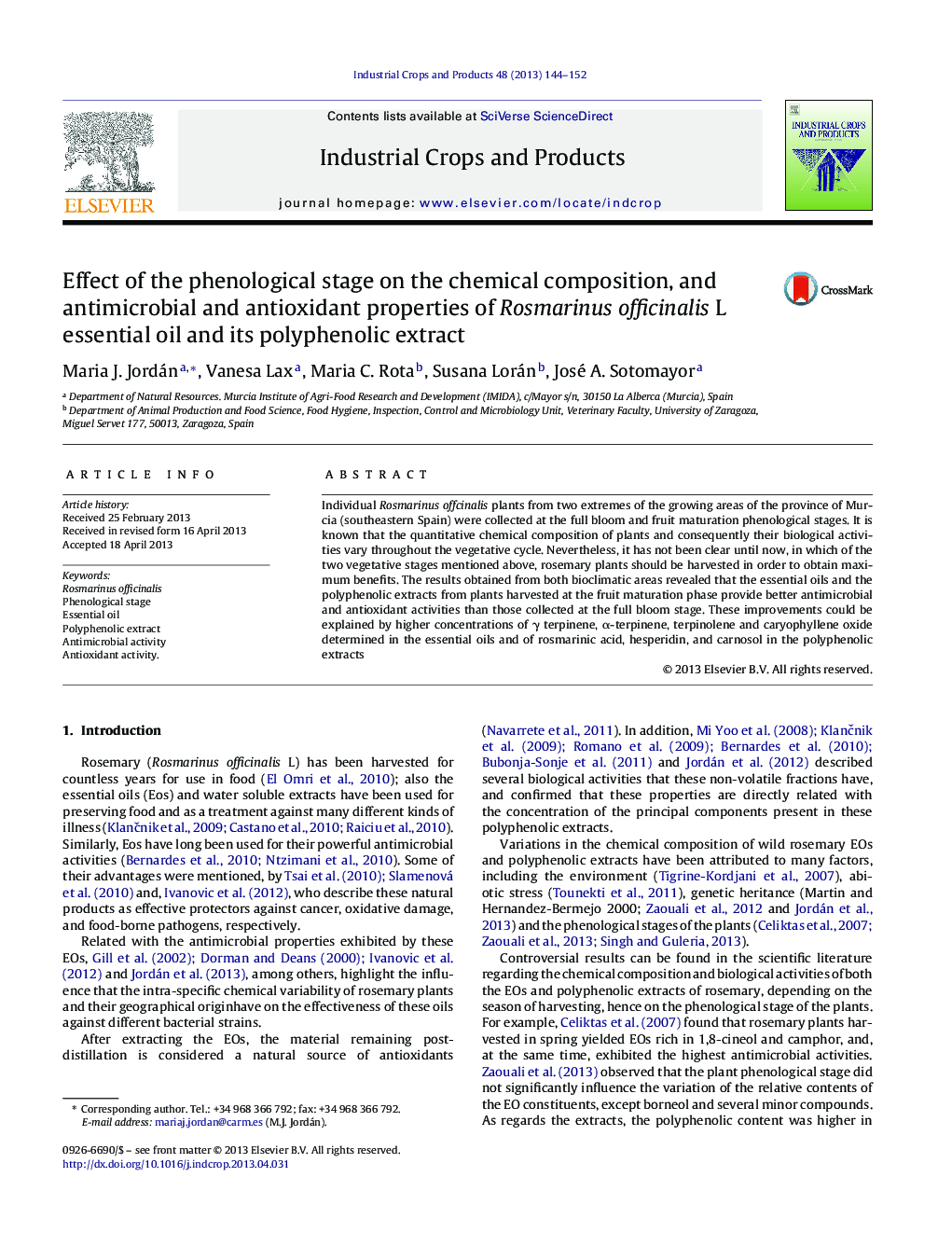| Article ID | Journal | Published Year | Pages | File Type |
|---|---|---|---|---|
| 4513800 | Industrial Crops and Products | 2013 | 9 Pages |
•Rosemary plants from Murcia (Spain) were collected at flowering and fructification.•Essential oil compositions vary in the phenological stages.•Polyphenolic extract compositions vary in the phenological stages.•Antibacterial and antioxidant activities also change with phenological stage.•Fruit maturation is proposed as the optimal harvesting stage
Individual Rosmarinus offcinalis plants from two extremes of the growing areas of the province of Murcia (southeastern Spain) were collected at the full bloom and fruit maturation phenological stages. It is known that the quantitative chemical composition of plants and consequently their biological activities vary throughout the vegetative cycle. Nevertheless, it has not been clear until now, in which of the two vegetative stages mentioned above, rosemary plants should be harvested in order to obtain maximum benefits. The results obtained from both bioclimatic areas revealed that the essential oils and the polyphenolic extracts from plants harvested at the fruit maturation phase provide better antimicrobial and antioxidant activities than those collected at the full bloom stage. These improvements could be explained by higher concentrations of γ terpinene, α-terpinene, terpinolene and caryophyllene oxide determined in the essential oils and of rosmarinic acid, hesperidin, and carnosol in the polyphenolic extracts
